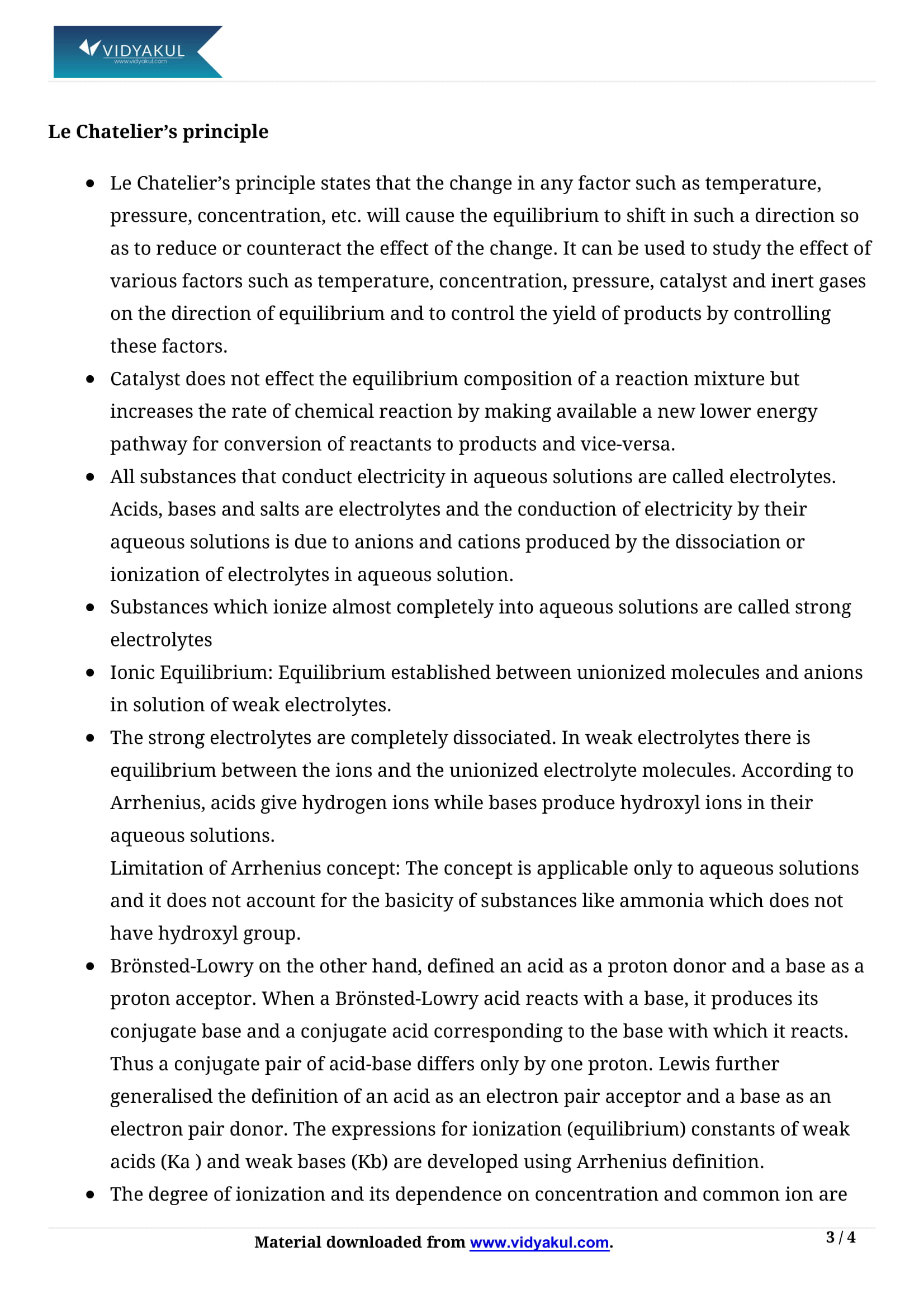Equilibrium Class 11 Notes

Chapter 7 Equilibrium
Chapter 7 Grade 11 NCERT Chemistry is all about balance. It contains several interesting and challenging questions to help students develop their conceptual understanding of the subject. This document provides a comprehensive understanding of the NCERT notes for Class 11 Chemistry Chapter 7 that requires a deep understanding of the subject to understand the concepts.
CBSE Class 11 Chemistry Chapter 7 covers Equilibrium of Physical Processes, Equilibrium of Chemical Processes, Chemical Equilibrium and the Law of Equilibrium Constants, and Uniform Equilibrium. Students should focus primarily on the text questions provided by Vidyakul in order to score well on the exam. Scroll down to access Chapter 7 Chemistry Class 11 notes.
CBSE 11th CHEMISTRY CH-7
Points to Remember
Students can find the important points related to Class 11 Chemistry Chapter 7 as mentioned below:
Physical and chemical equilibrium: (i) In equilibrium state all the properties of the system like temperature, pressure and composition become constant and no change seems to occur in it.
(ii) In a state of static equilibrium, ‘no change’ at all occurs in the system. This type of equilibrium is attained when different kinds of forces acting on the system balance each other and no ‘net’ force acts on it.
(iii) In a state of dynamic equilibrium, two opposite changes occur in the system simultaneously and at the same rate, which results in no ‘net change’ occurring in the system.
(iv) When equilibrium is reached in a physical process, it is called physical equilibrium. When equilibrium is reached in a chemical process, it is called chemical equilibrium.
Heterogeneous and homogeneous equilibria: If an equilibrium is established in a reaction in which all the reactants and products are present in the same phase, it is called homogeneous equilibrium and if present in more than one phase, it is called heterogeneous equilibrium.
Topics and Sub-topics
NCERT Class 11 Chemistry chapter 7 is one of the most important chapters in the session to score good marks in the exam. The chapter may seem difficult to understand at first, thus delving further into the concepts and solving the problems helps students to become proficient in the topic. The students should revise the topic daily to prepare for the final exam.
Vidyakul offers notes for each problem in the Class 11 Chemistry chapter 7 textbook, considering the latest syllabus. Moreover, students can practice all the notes for free. Before getting into the detailed notes , here’s a look at the list of topics and subtopics included in this chapter:
Frequently Asked Questions
What is stated in the ‘Le Chatelier’s’ principle?
It states that changes in the temperature, pressure, volume, or concentration of a system will result in predictable and opposing changes in the system in order to achieve a new equilibrium state.
What is the meaning of ‘Lewis acid’ and ‘Lewis base’?
A Lewis acid is a substance that accepts a pair of electrons to form a covalent bond. A Lewis base is a substance that donates a pair of electrons to form a covalent bond.
What are ‘Electrolytes’?
Electrolytes are minerals in your blood and other body fluids that carry an electric charge.
Practice Questions
1. Tick mark Lewis acids from the following
H2O, H+, NH+4 and BF3
2.. Below are Brönsted bases. Write the conjugate acids for the same.
NH2–, HCOO–, NH3. Cupric chlorate and sodium iodate having an equal volume of 0.002M. Will the precipitation of copper iodate will occur or not?
3.Cupric chlorate and sodium iodate having an equal volume of 0.002M. Will the precipitation of copper iodate will occur or not?
4.Calculate the solubilities of
a) barium chromate
b) ferric hydroxide
c) lead chloride
d) mercurous iodide
e) silver chromate
What is stated in the ‘Le Chatelier’s’ principle?
What is the meaning of ‘Lewis acid’ and ‘Lewis base’?
What are ‘Electrolytes’?
Learn more about it in Equilibrium Class 11 Notes pdf.
Download this solution for FREE Download this PDF







